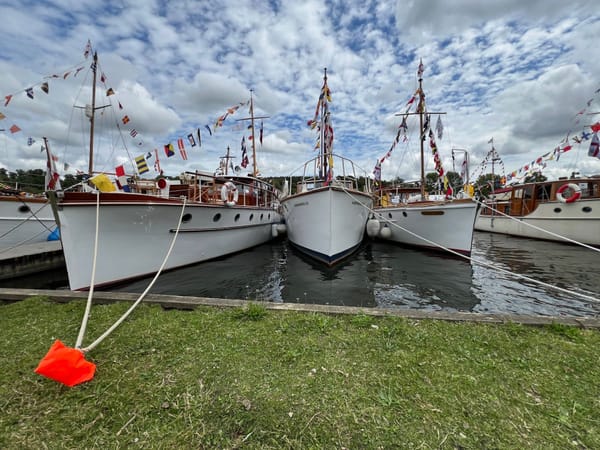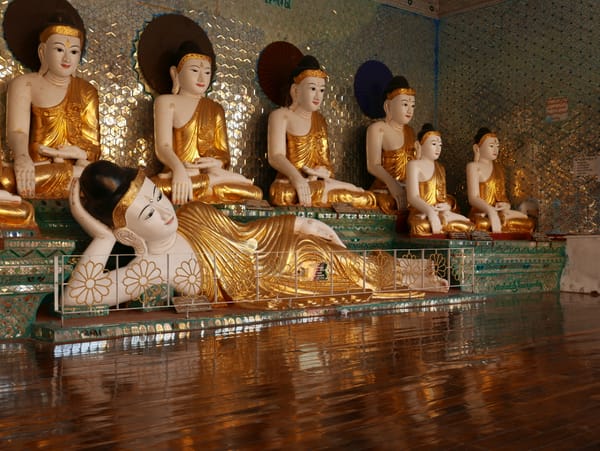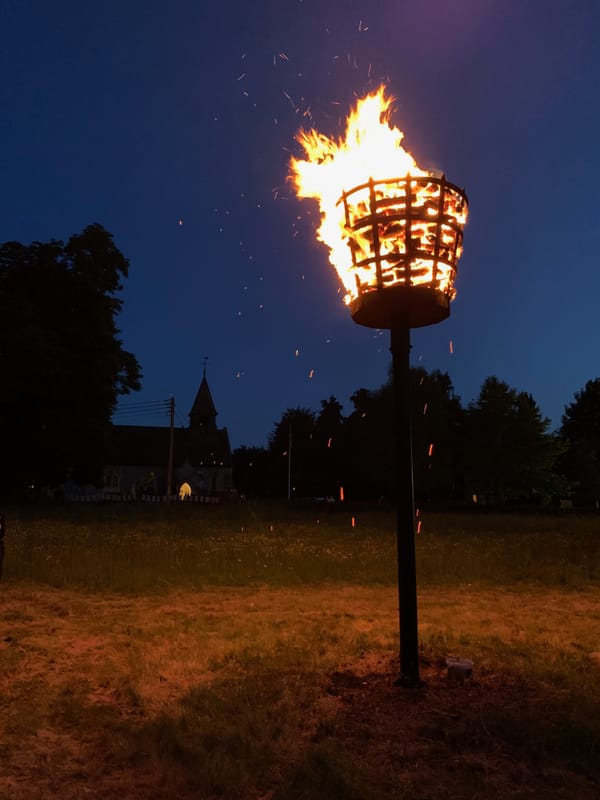Myanmar (Burma) — Riding the circular train in Yangon (Rangoon), Myanmar (Burma)
All aboard — exploring Yangon by train
March 2015
The Circular Train was an excellent way to see Yangon. It is the ‘locals’ transport, and I got to see the ‘real’ Yangon (Rangoon) by taking the train.
I arrived at the station and asked for the next departing train — I was told it would be leaving from platform seven at 10:10 am.
I found platform 7, over the bridge at the far left-hand end of the main railway building. Platform 7 was the last platform at the end of the bridge.
I waited on the 10:10 am train, and at 10:25 am, I was still sitting there, and no other passengers had joined me.
Finally, I asked someone on the platform if I was on the correct train; they didn't know but sent me to a small office. The man in the office told me the train I needed would be departing in 10 minutes from platform 2. I had been sitting on the 11:45 am.
The person in the central part of the station didn’t know which train went from what platform or where it went.
I bought my ticket from the office on platform 7 and headed to platform 2. The ticket cost 1000 kyats (US$1.00; £0.65).
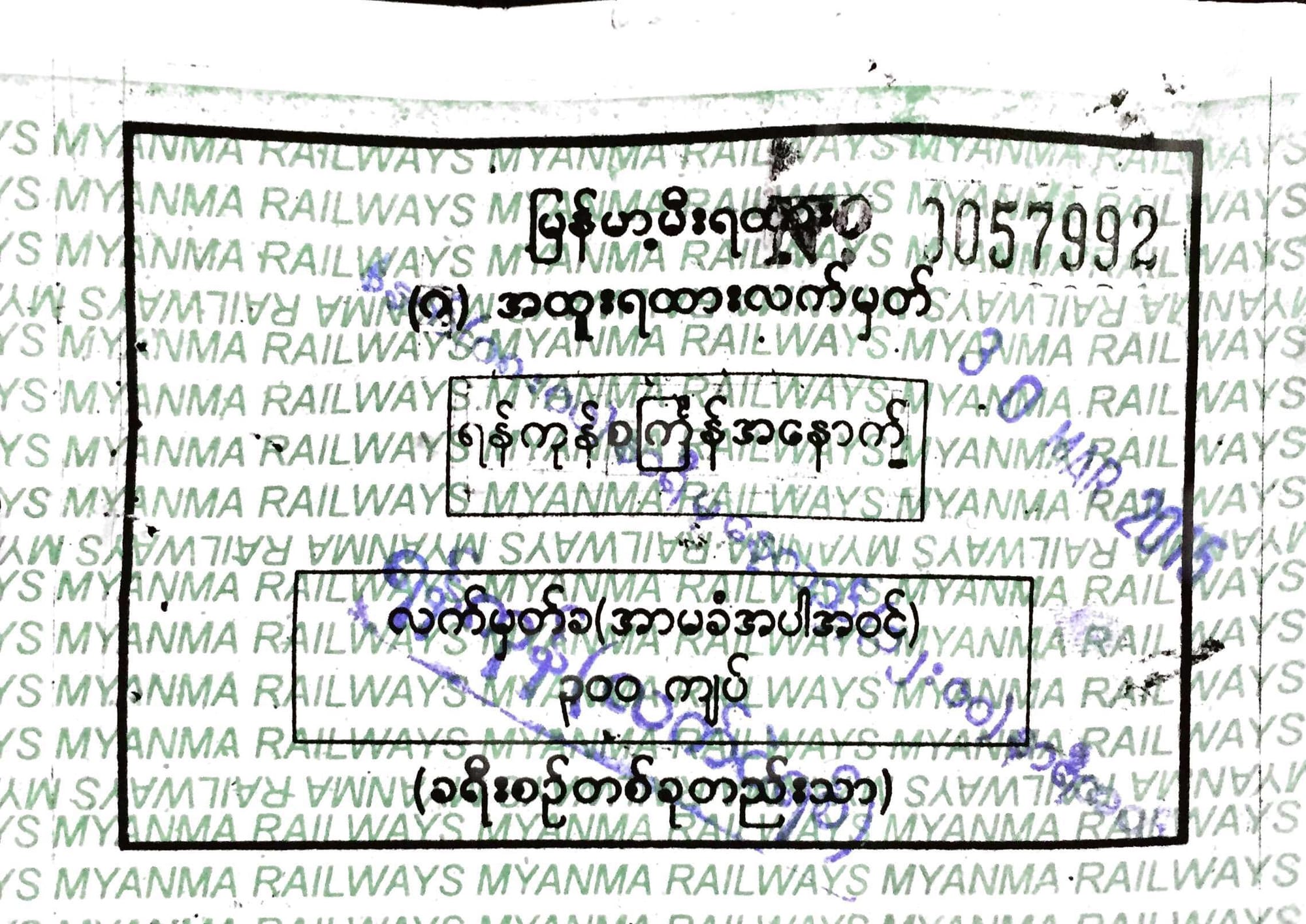
The waiting area in the central part of the train station was huge and almost empty.
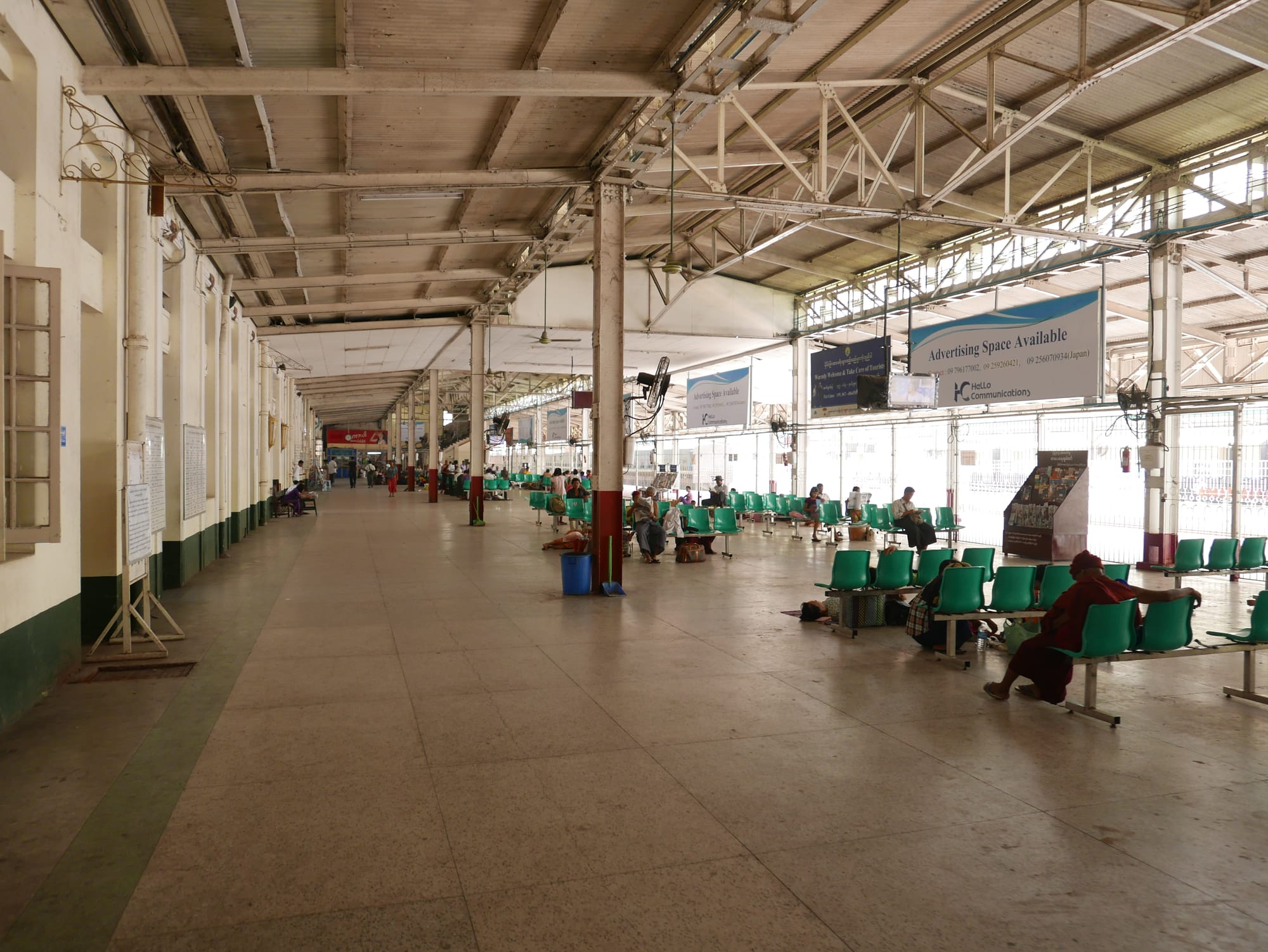
And it was clear this was the ‘local’ train as some passengers were heading to the local markets.
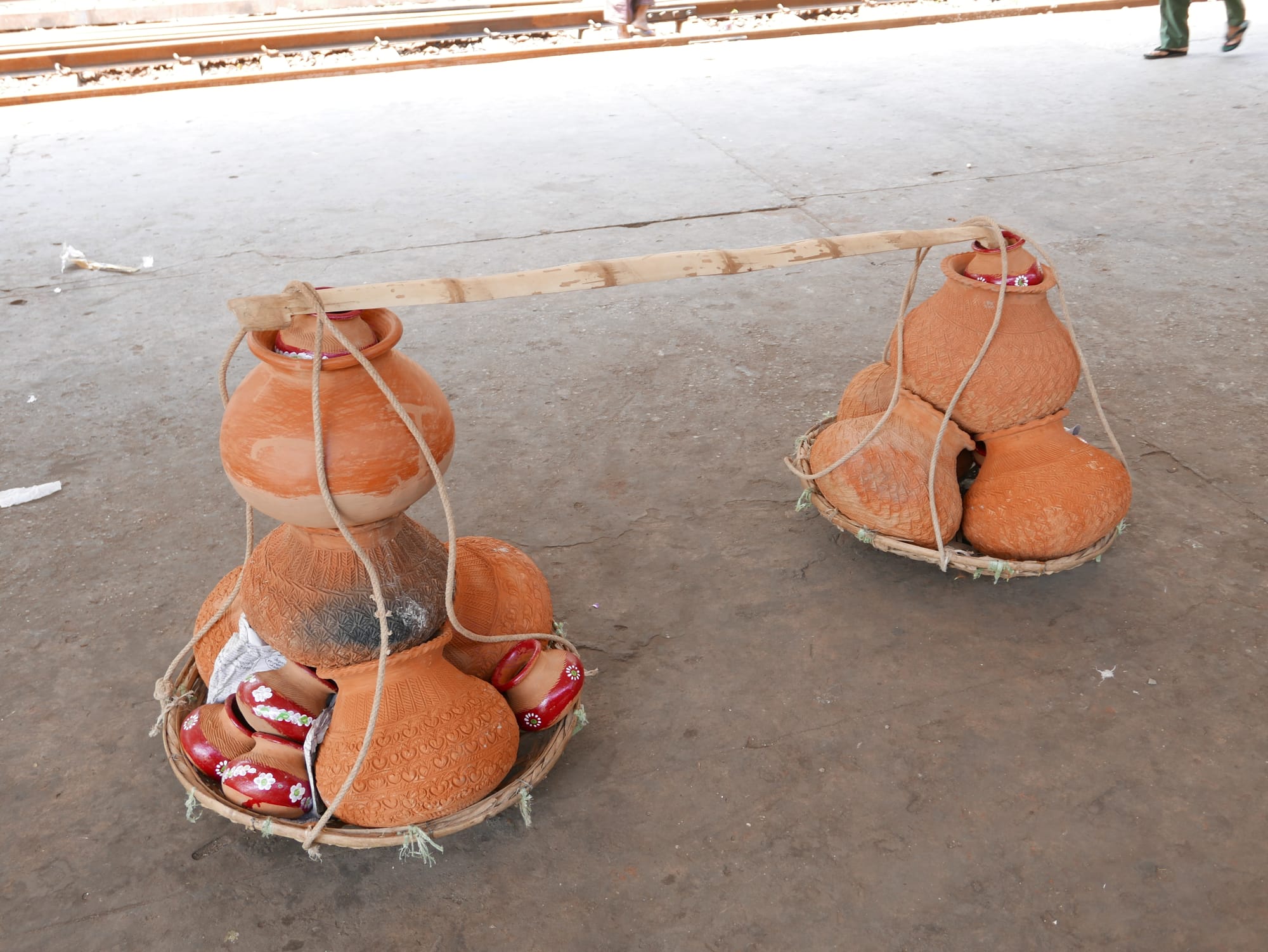
Below is a photo of the first train I was on — the wrong train.
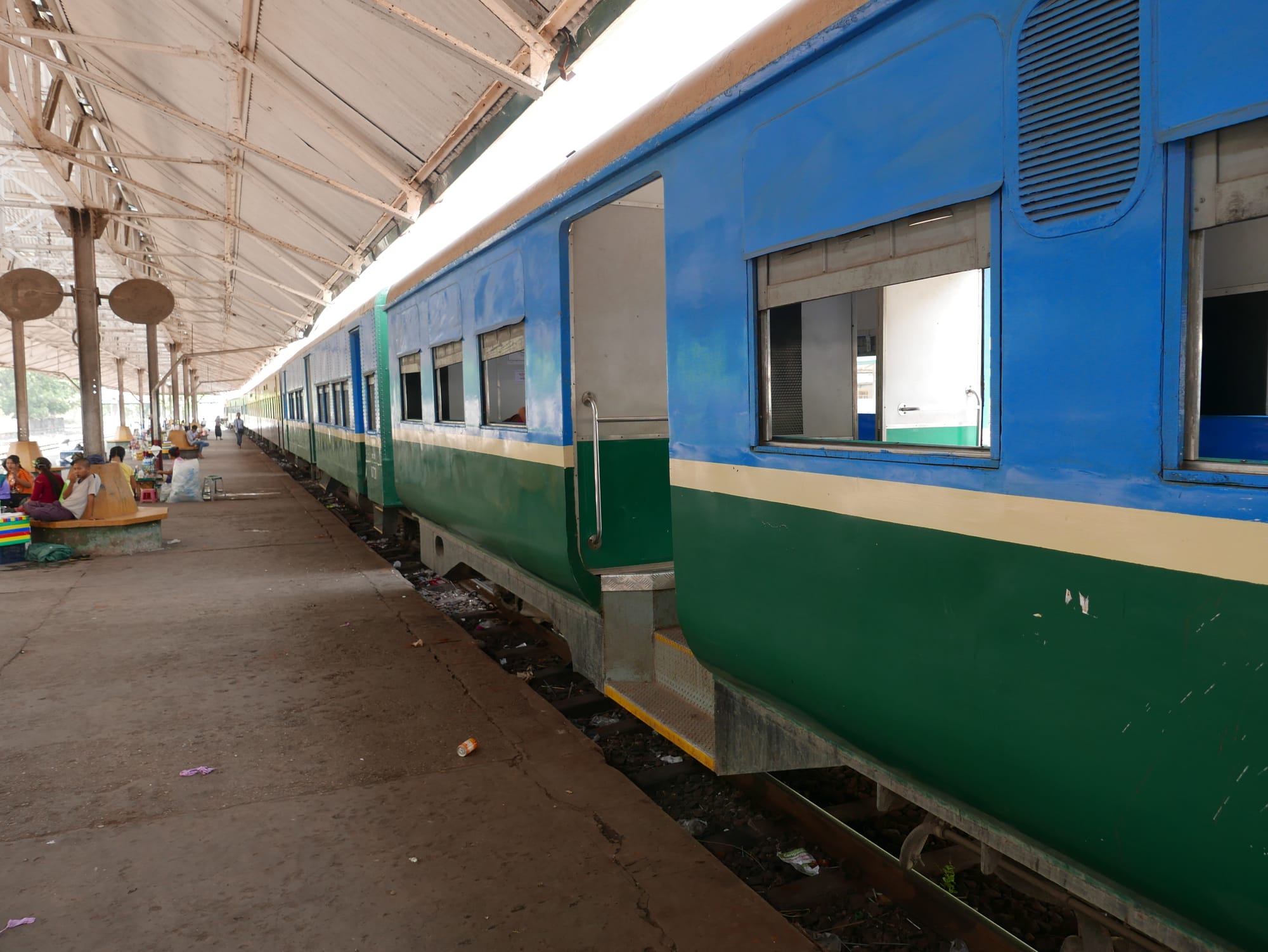
The train looked like it would be an interesting ride. There was no air conditioning, no windows, and no doors. And I liked the use of ceiling fans.
I think riding on such a train would have been a real experience.
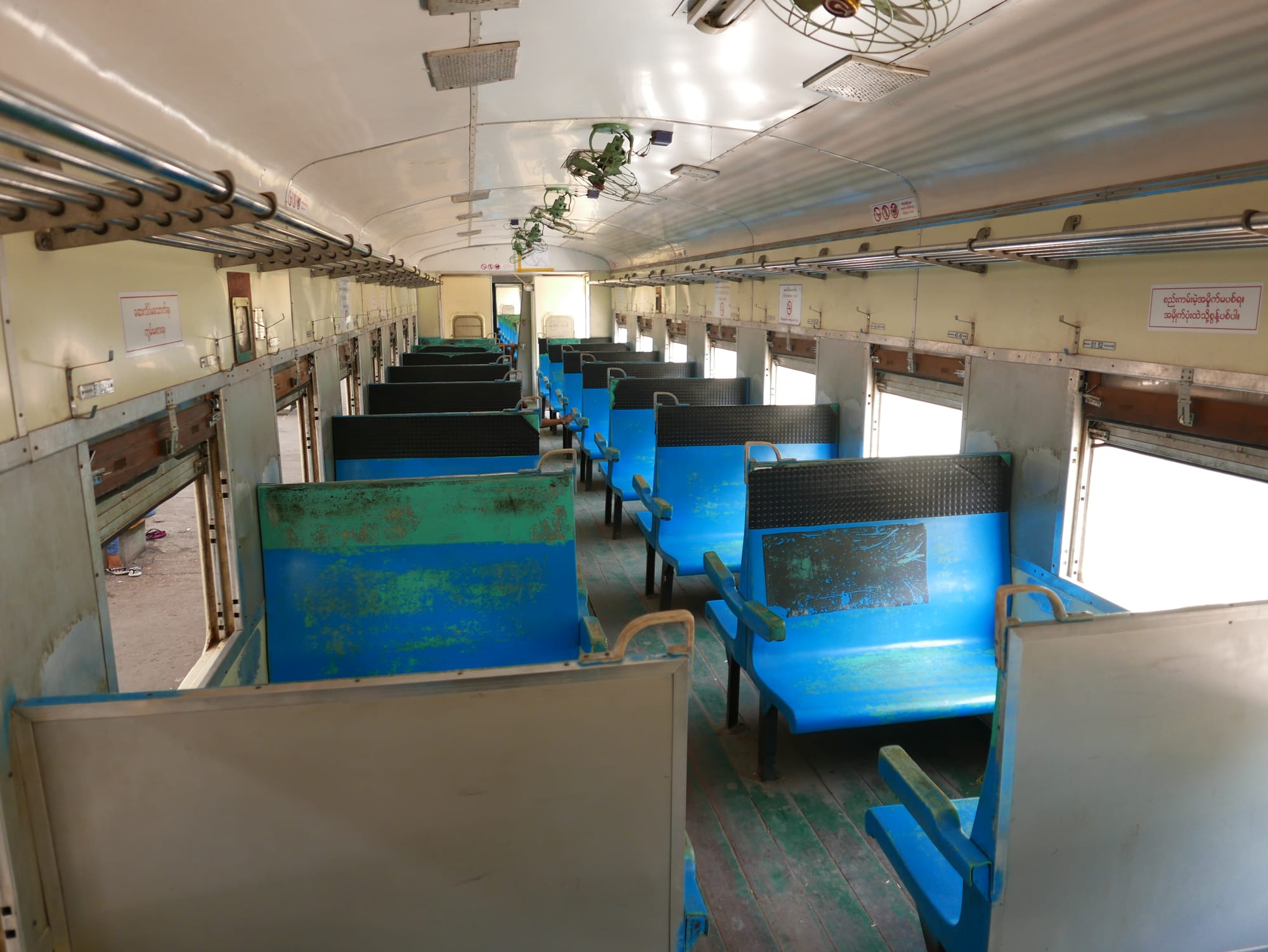
The engine at the front looked old and had been well-used.
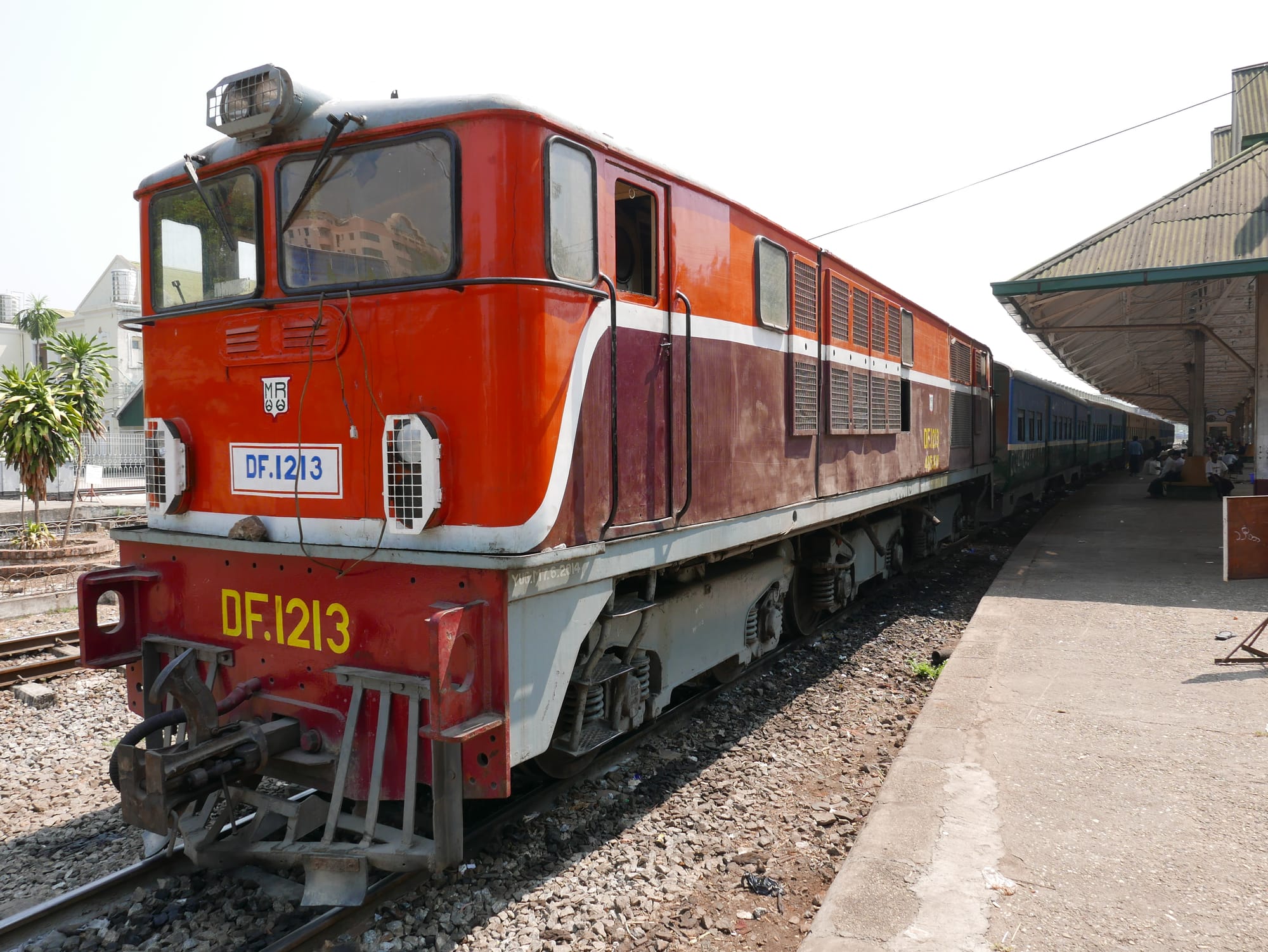
I was disappointed that I was not catching it.
As I walked onto platform two, the 10:25 am Circular Train, with air conditioning, pulled into the station.
Compared to the train I had left on platform 7, it looked modern and comfortable.
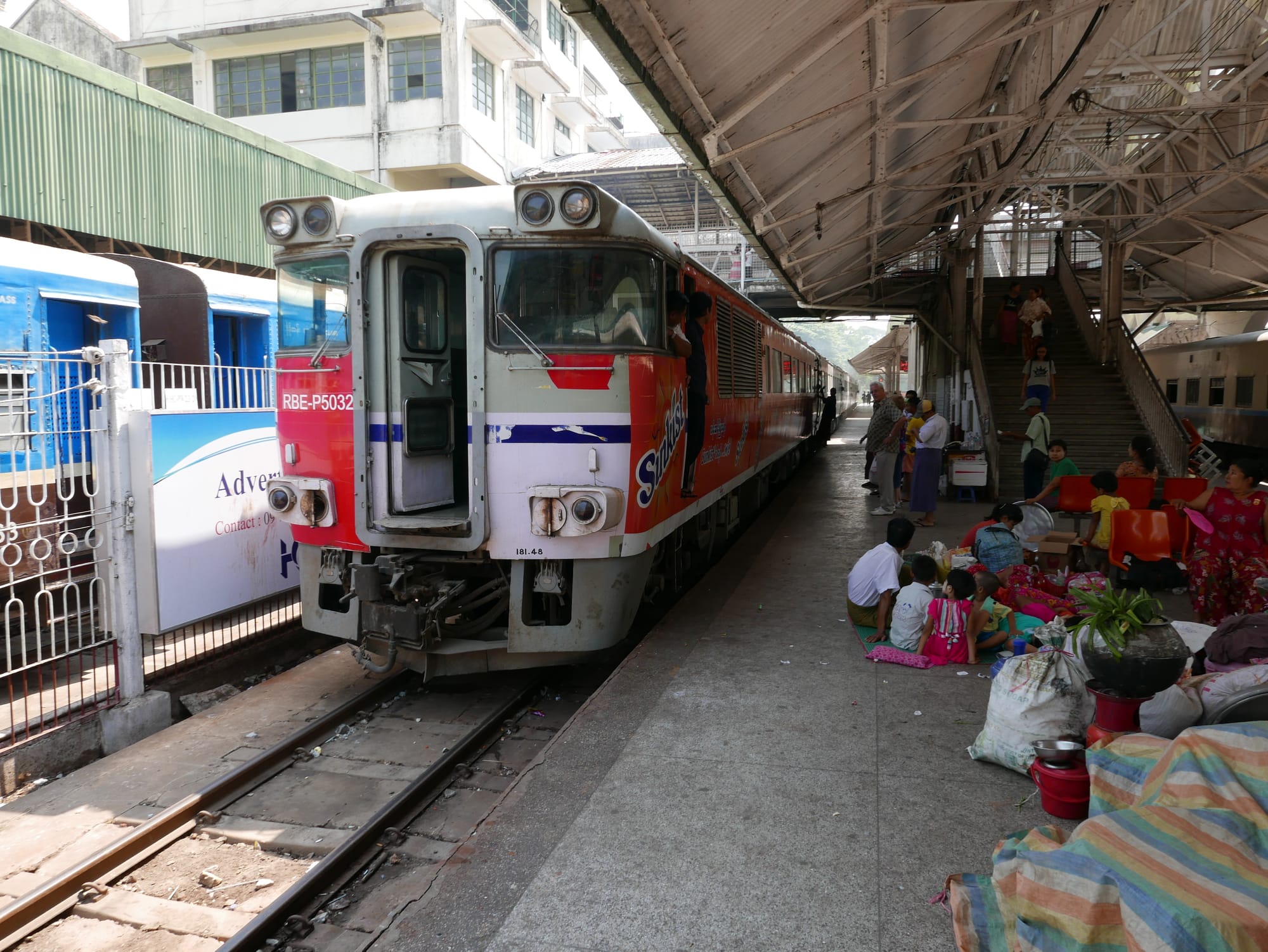
The train carriages had air conditioning. The carriage exits didn’t have doors, so it was possible to hang out of the train and take photos with no glass getting in the way. But, there was the risk of getting hit in the face by a tree.
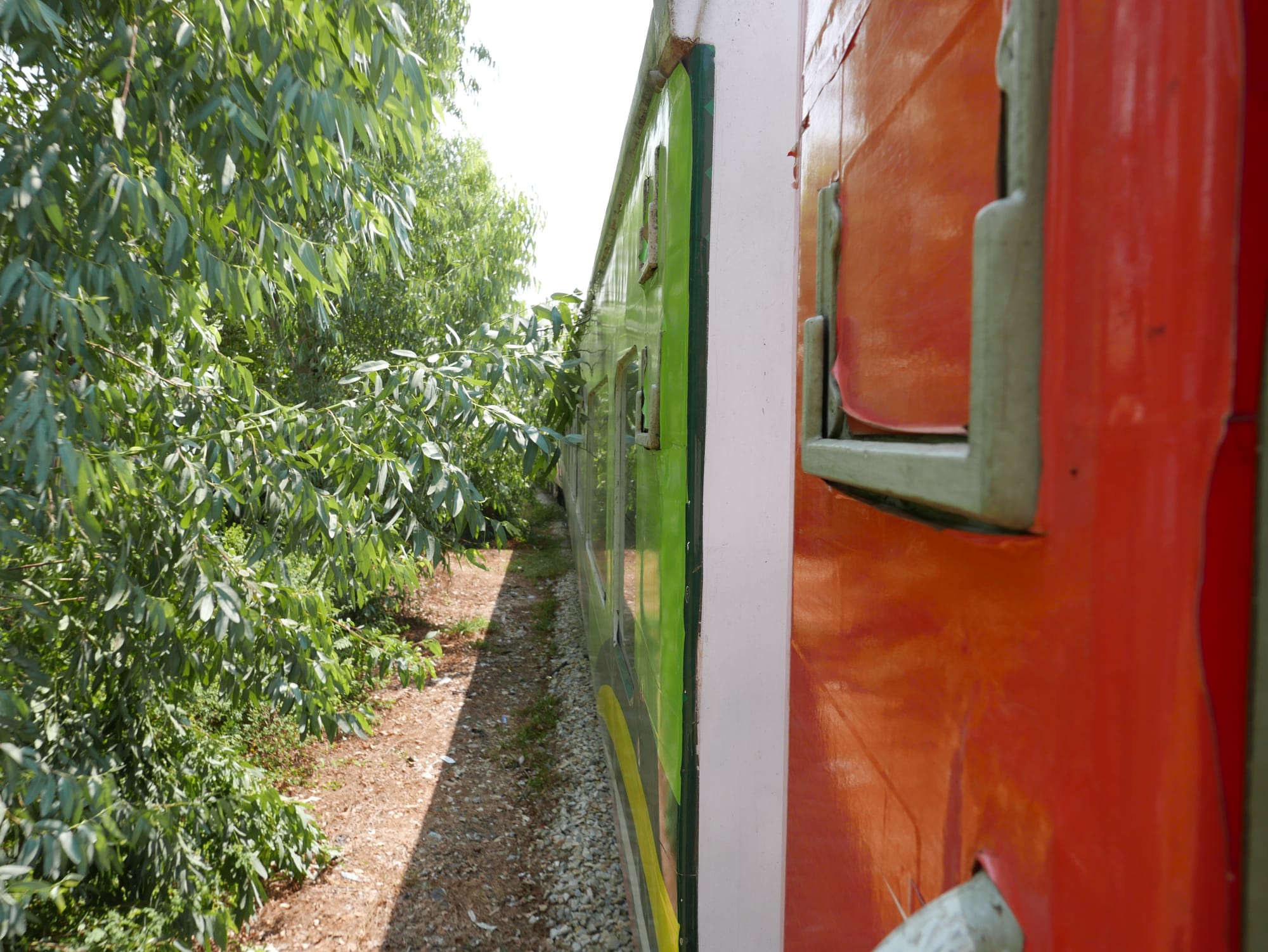
There was a rather casual approach to railway safety in Yangon (Rangoon). People wandered up and down the tracks and crossed the lines. At stations, it was standard for people to get on and off the train on the non-platform side.
In one case, I saw a person in flip-flops do a ‘running dismount’ as the train approached the station. He did this dismount on the non-platform side of the train. He faced the direction of travel and ‘flared’ out in a star shape. He had hold of the door rail with his left hand and had his left foot was on the running board. He then dropped to the ground and started running. Quite impressive. I would have face-planted and ended up under the wheels of the train.
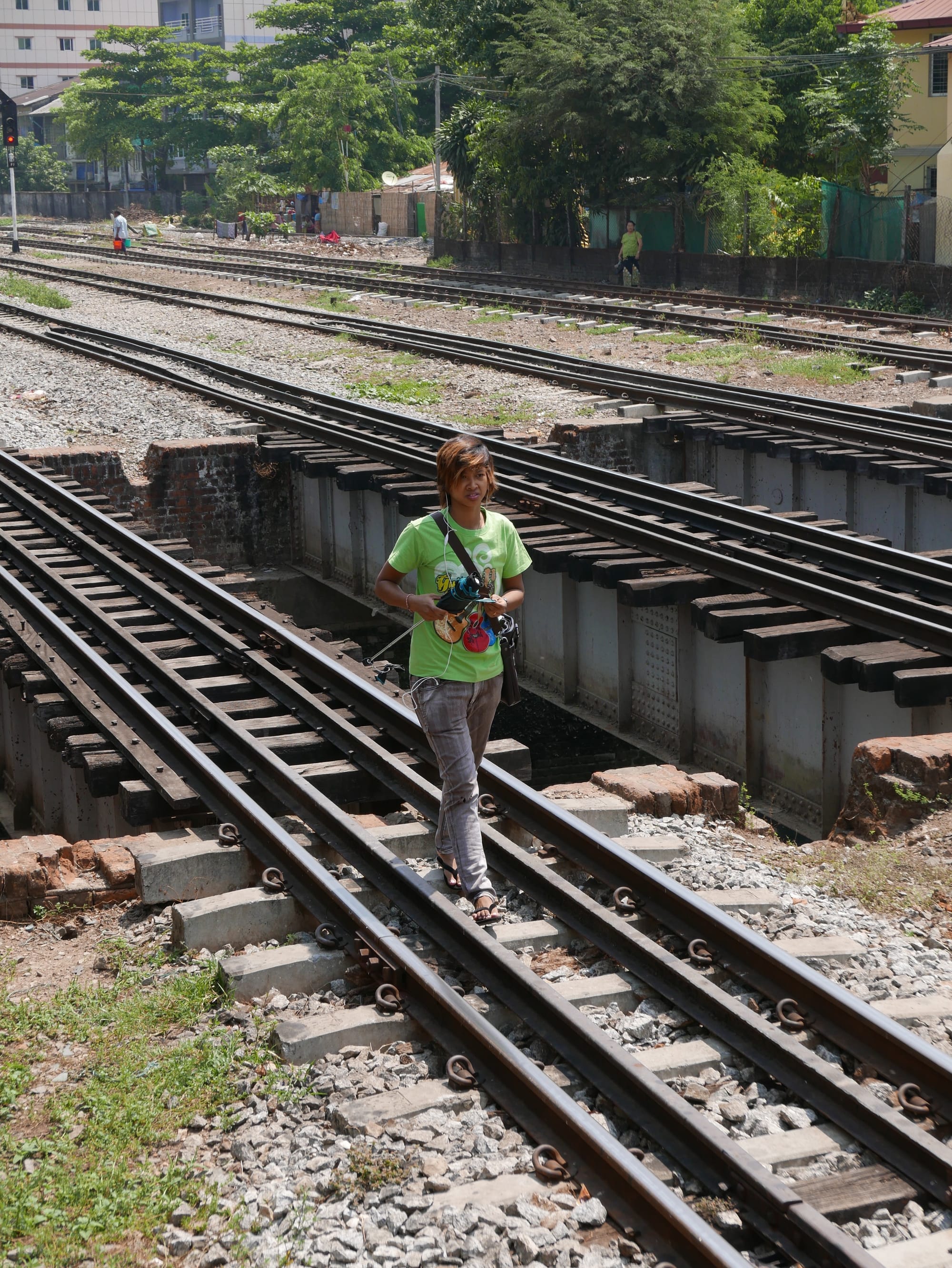
At most stations, there was a dash to get on and off the train. There was no hanging around. The train would pull out of the station as people were still joining or leaving the train.
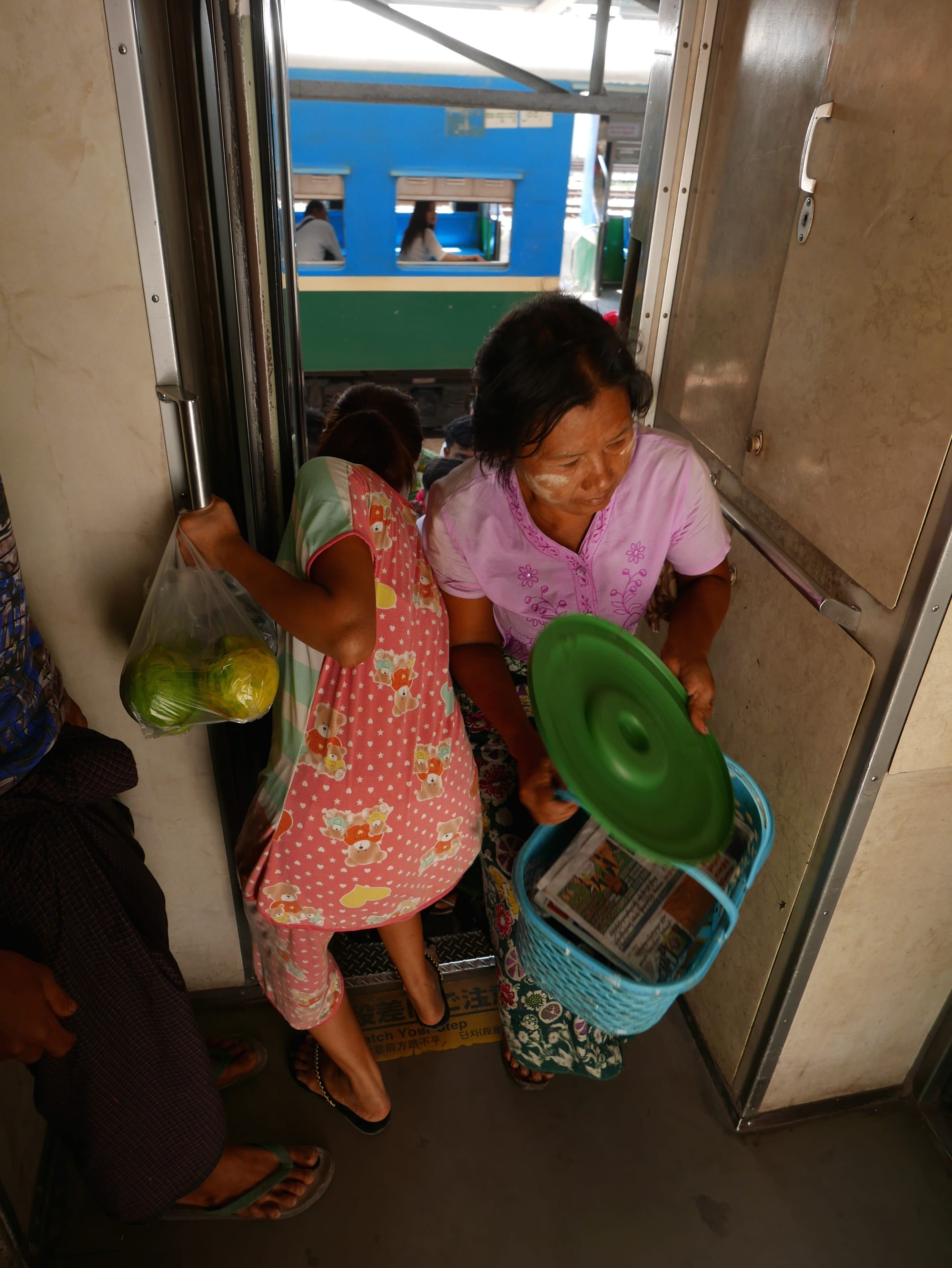
The views from the train were interesting. There were a surprising number of shacks dotted along the track.
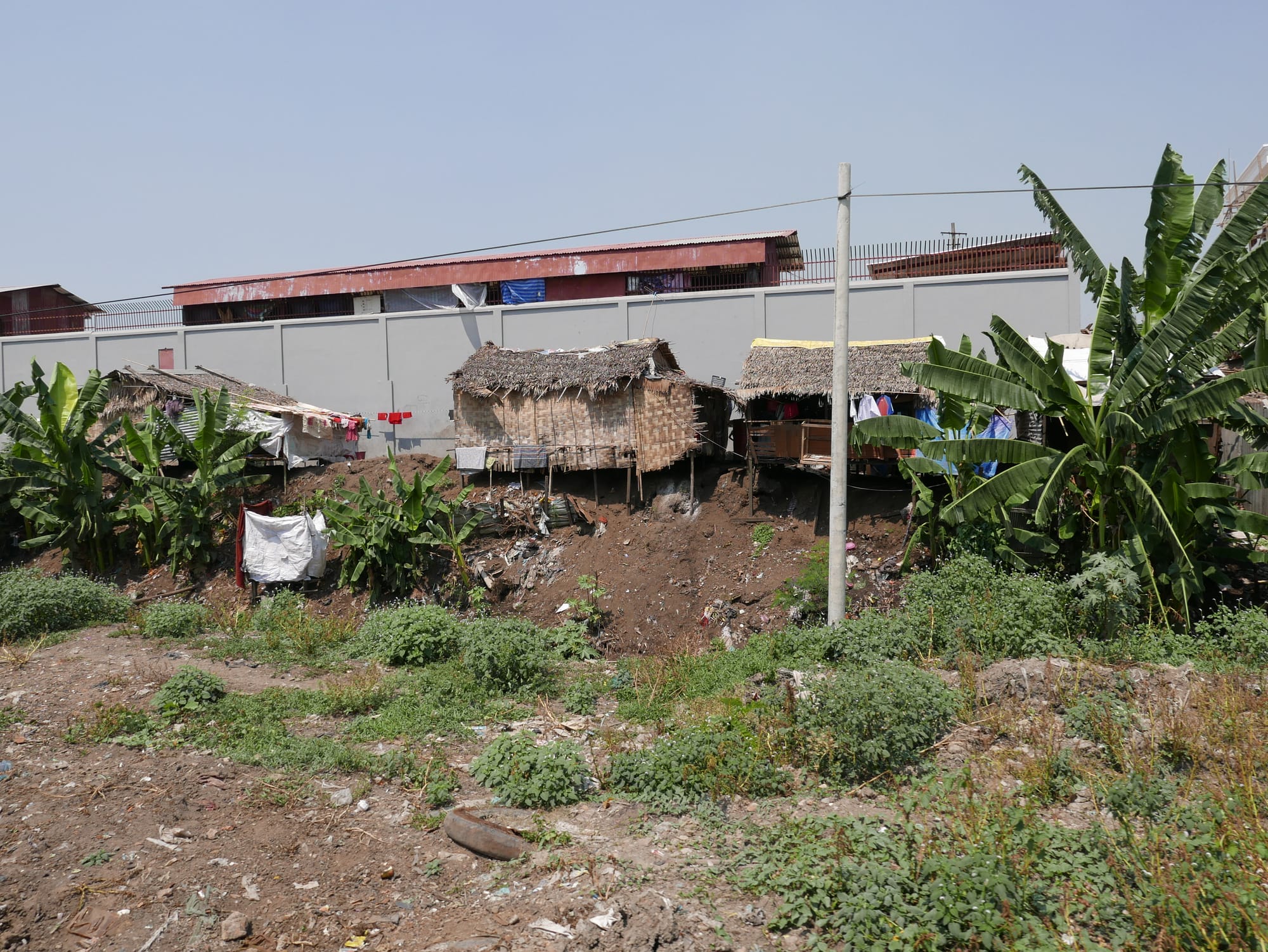
One thing that was quite depressing and alarming was the amount of rubbish seen from the Circular Train. The amount of discarded plastic littering the banks and choking the waterways was staggering.
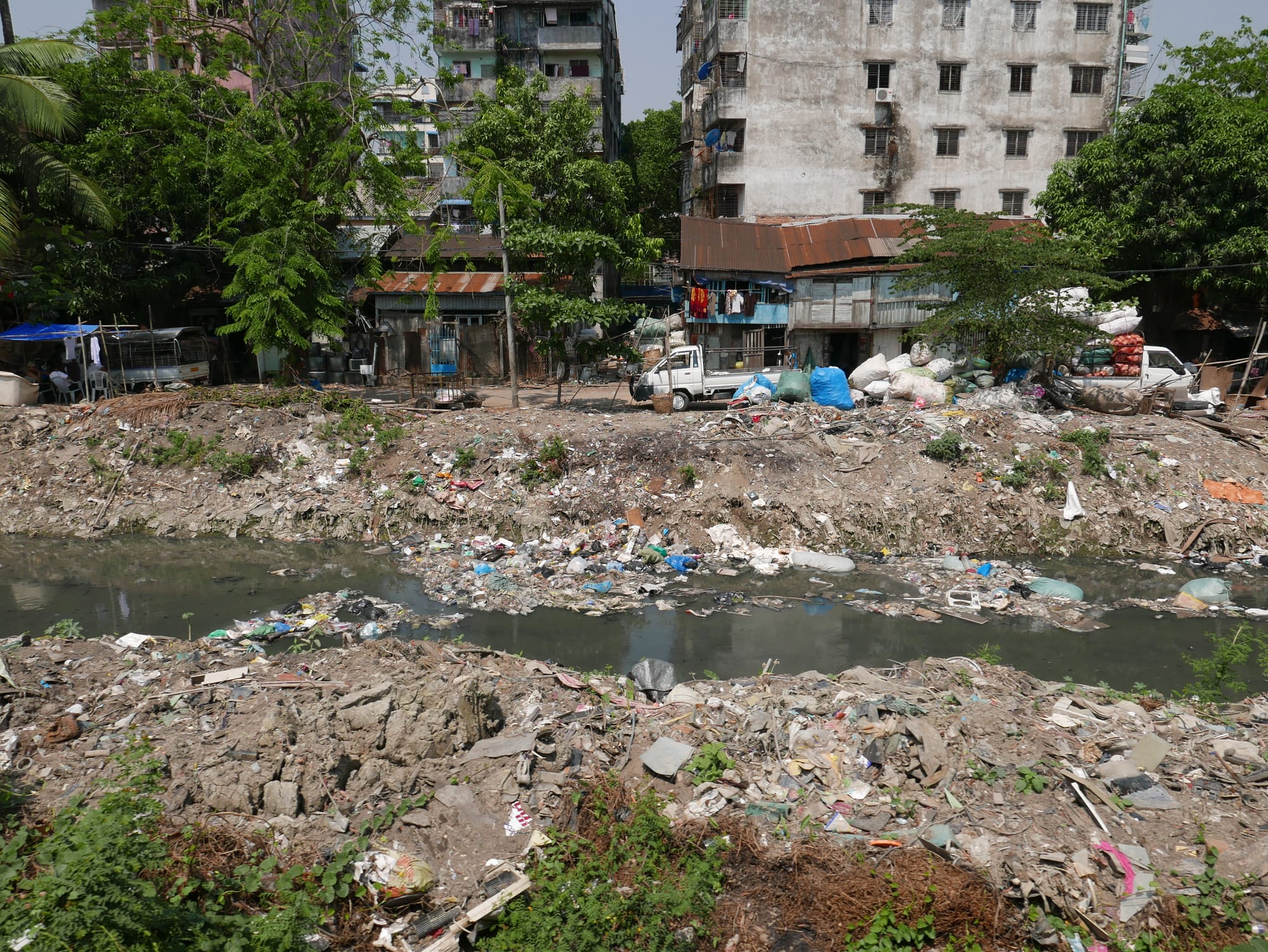
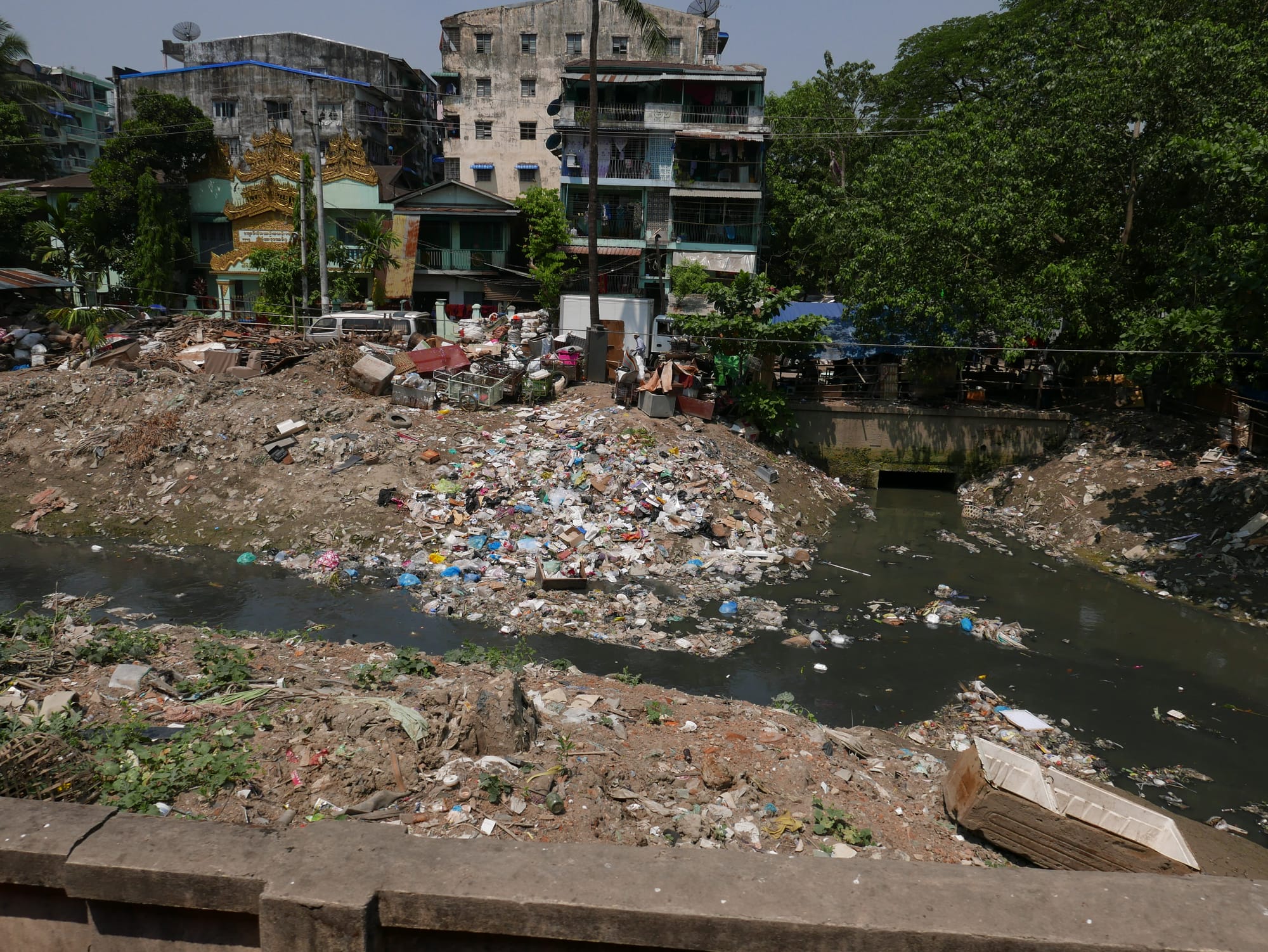
I was on the train outside the peak hours, and it was still heavily used. It must be crazy onboard for peak travel.
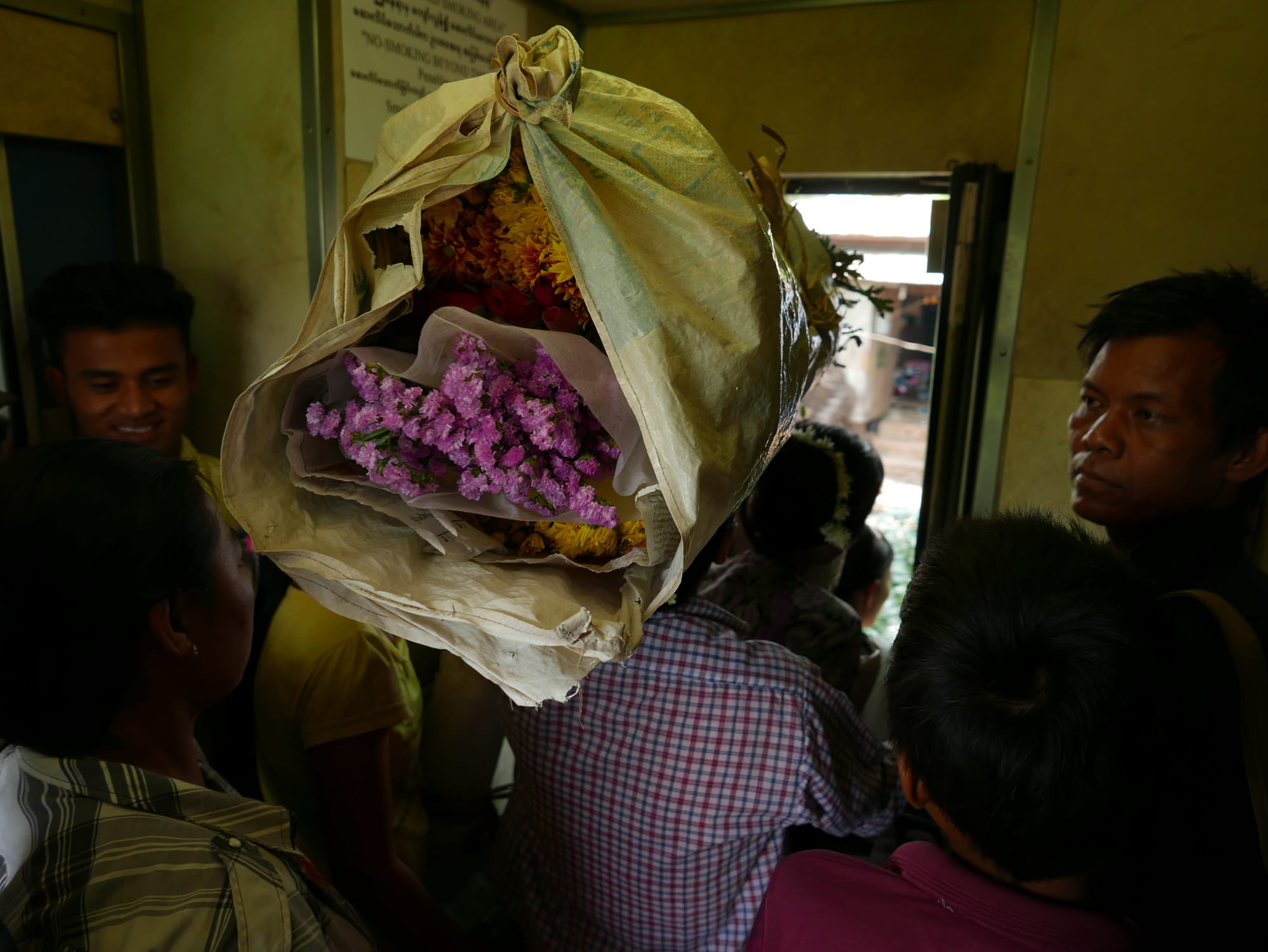
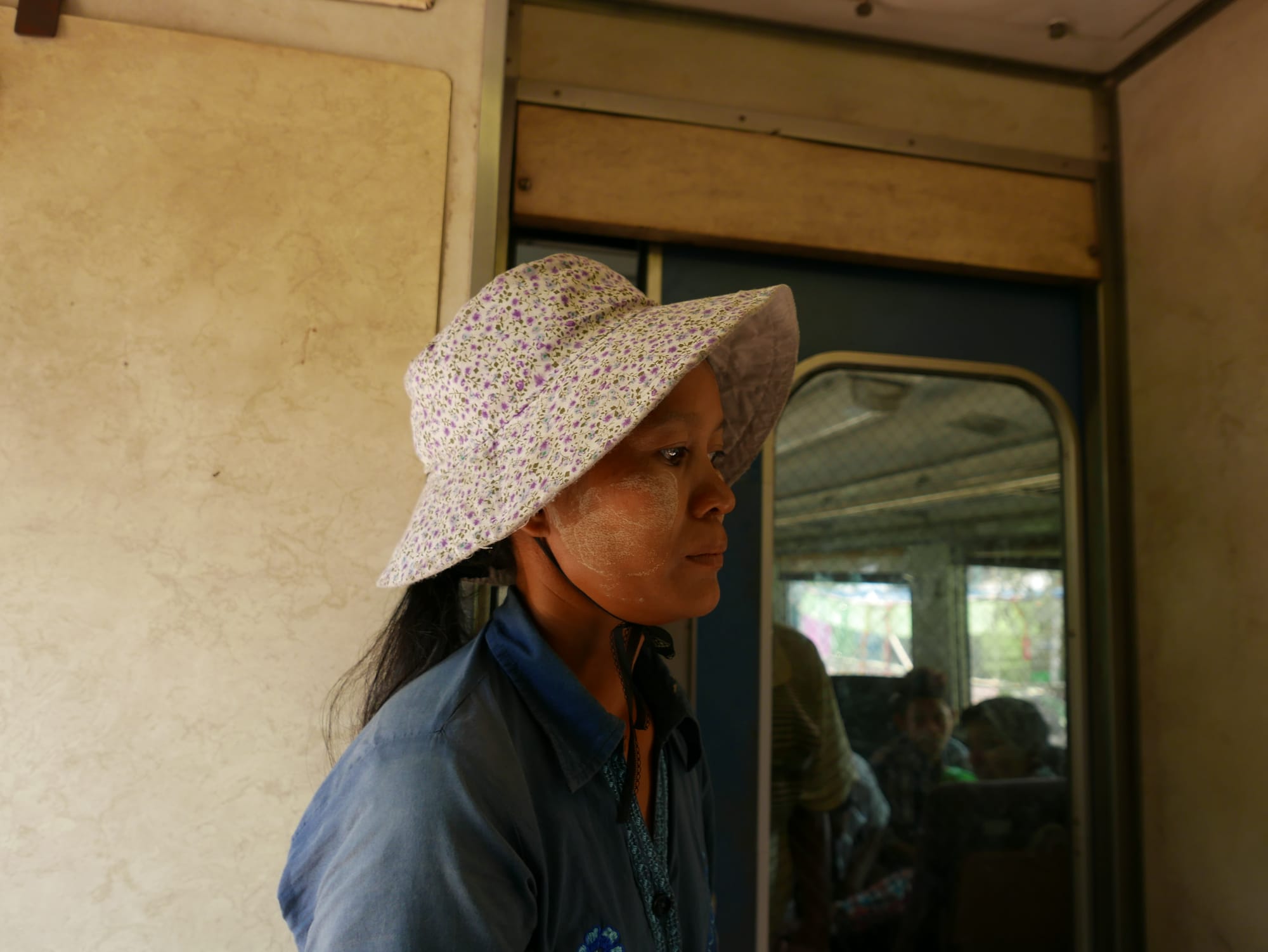
And despite all the rubbish along and beside the tracks, many farms looked very well-kept.
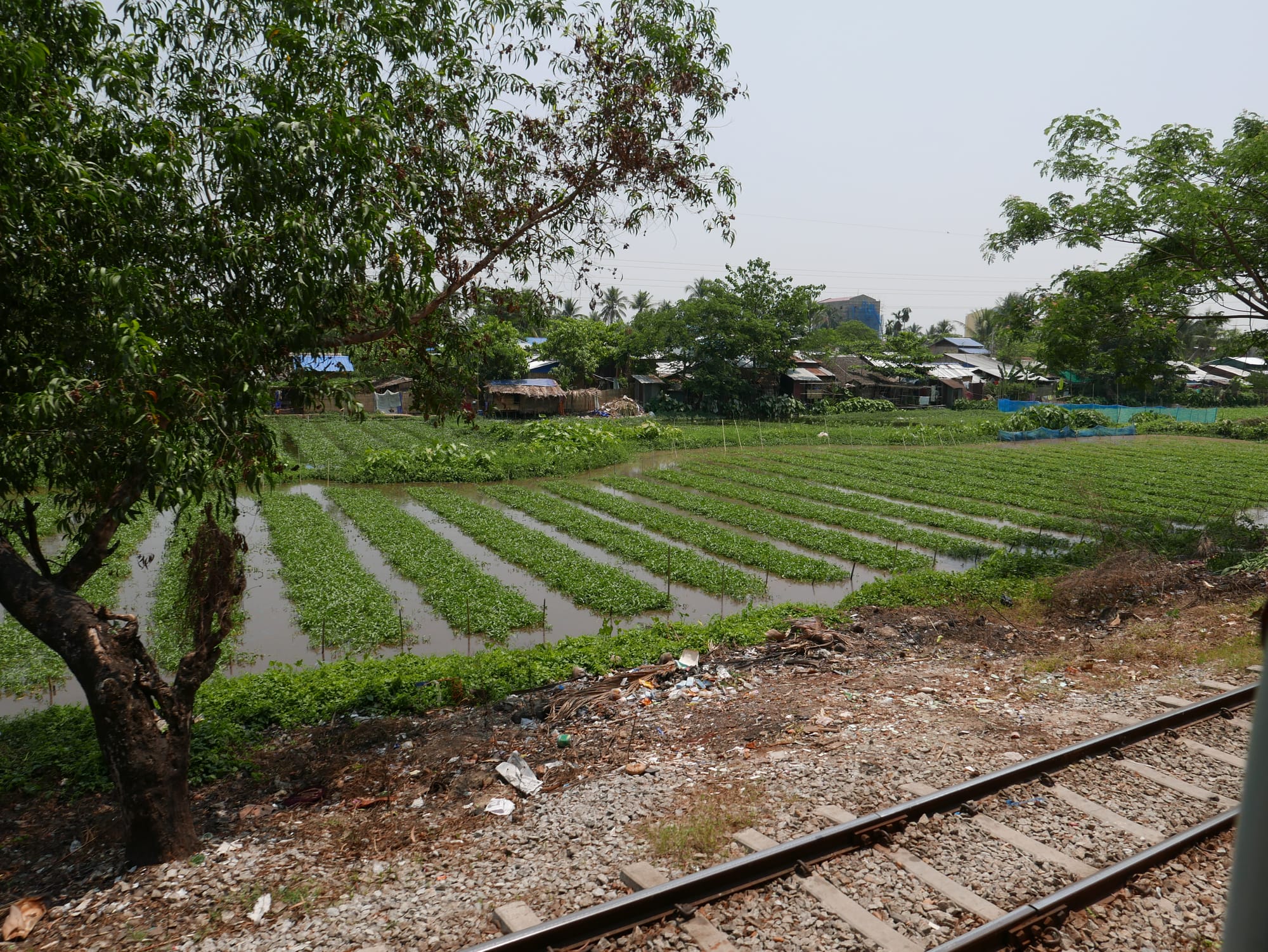
The contrast between the poor, run-down housing and the farms along the Circular Train route was striking.
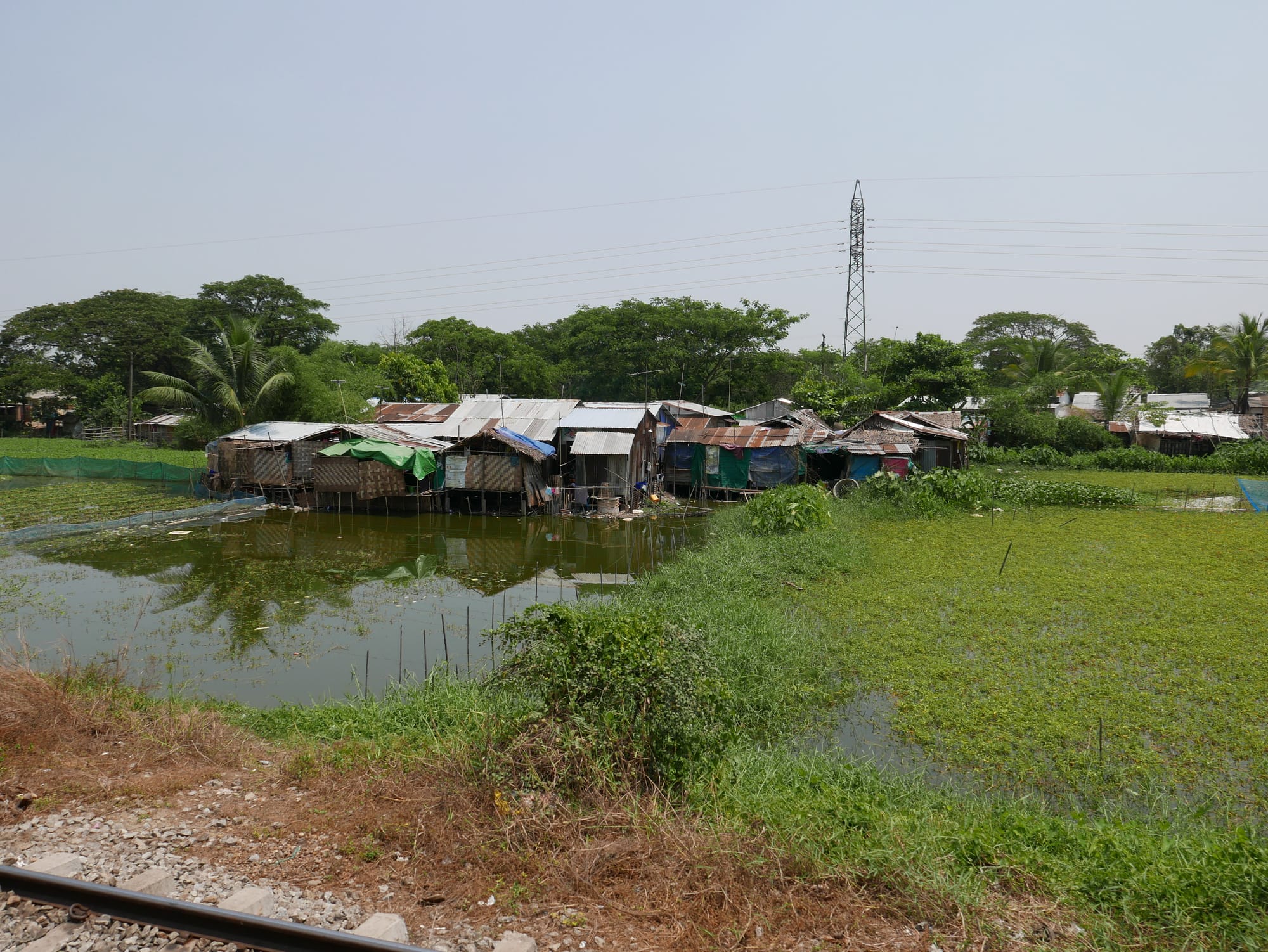
The farms were incredibly well looked after and immaculate and tidy.
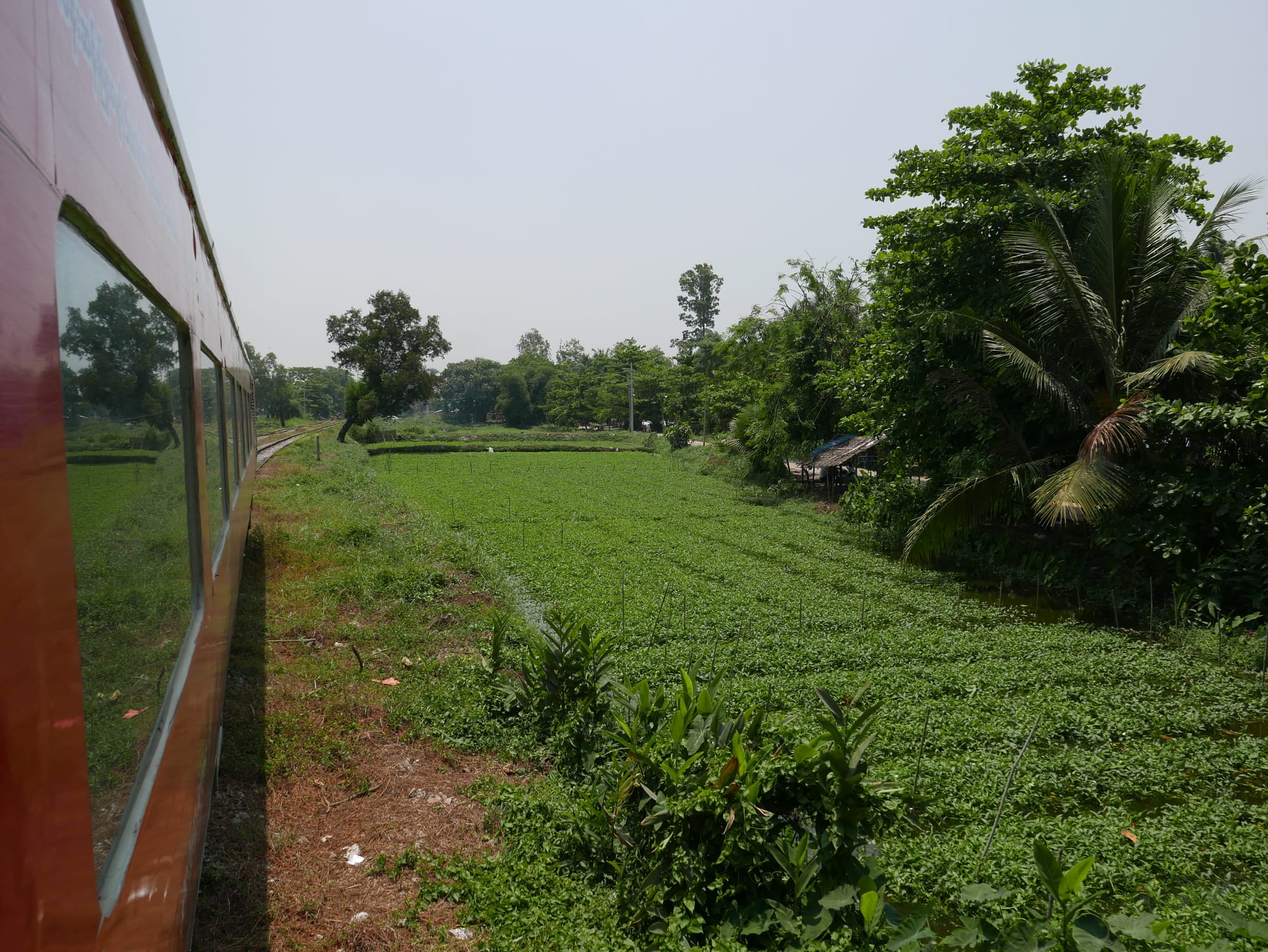
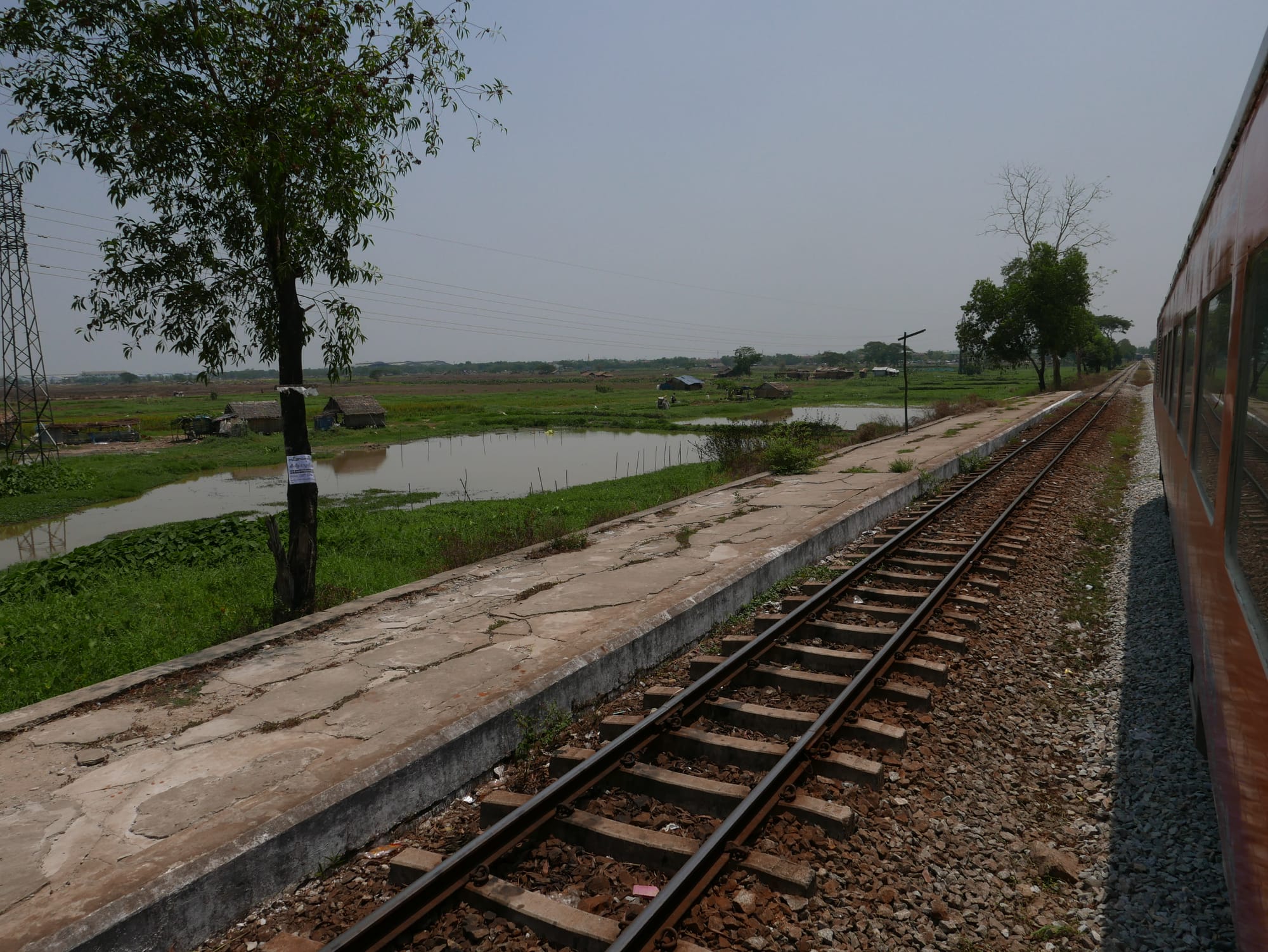
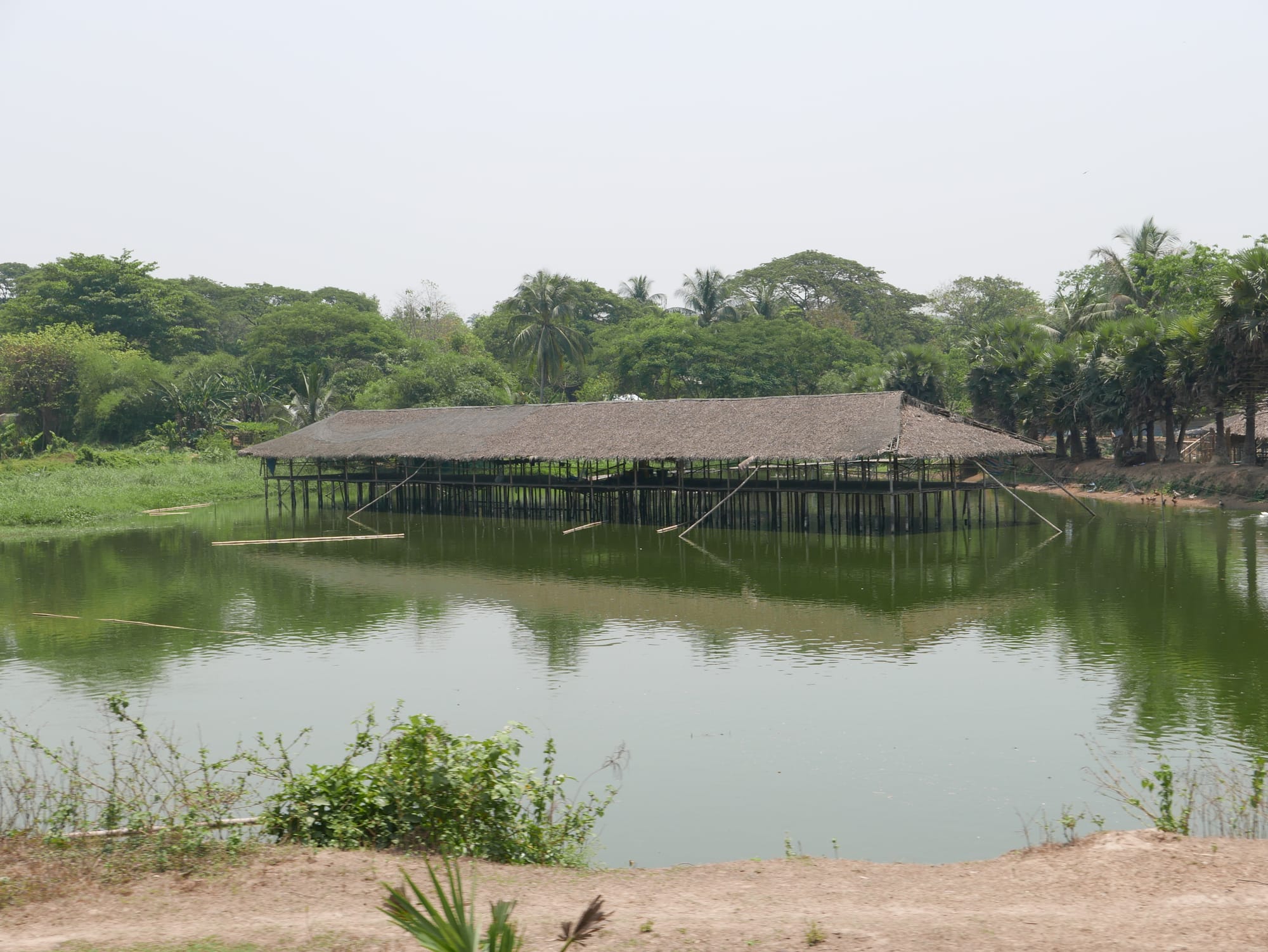
And almost at the furthest point of the journey from central Yangon (Rangoon) was the most oddly named station — Golf Course. Weird.
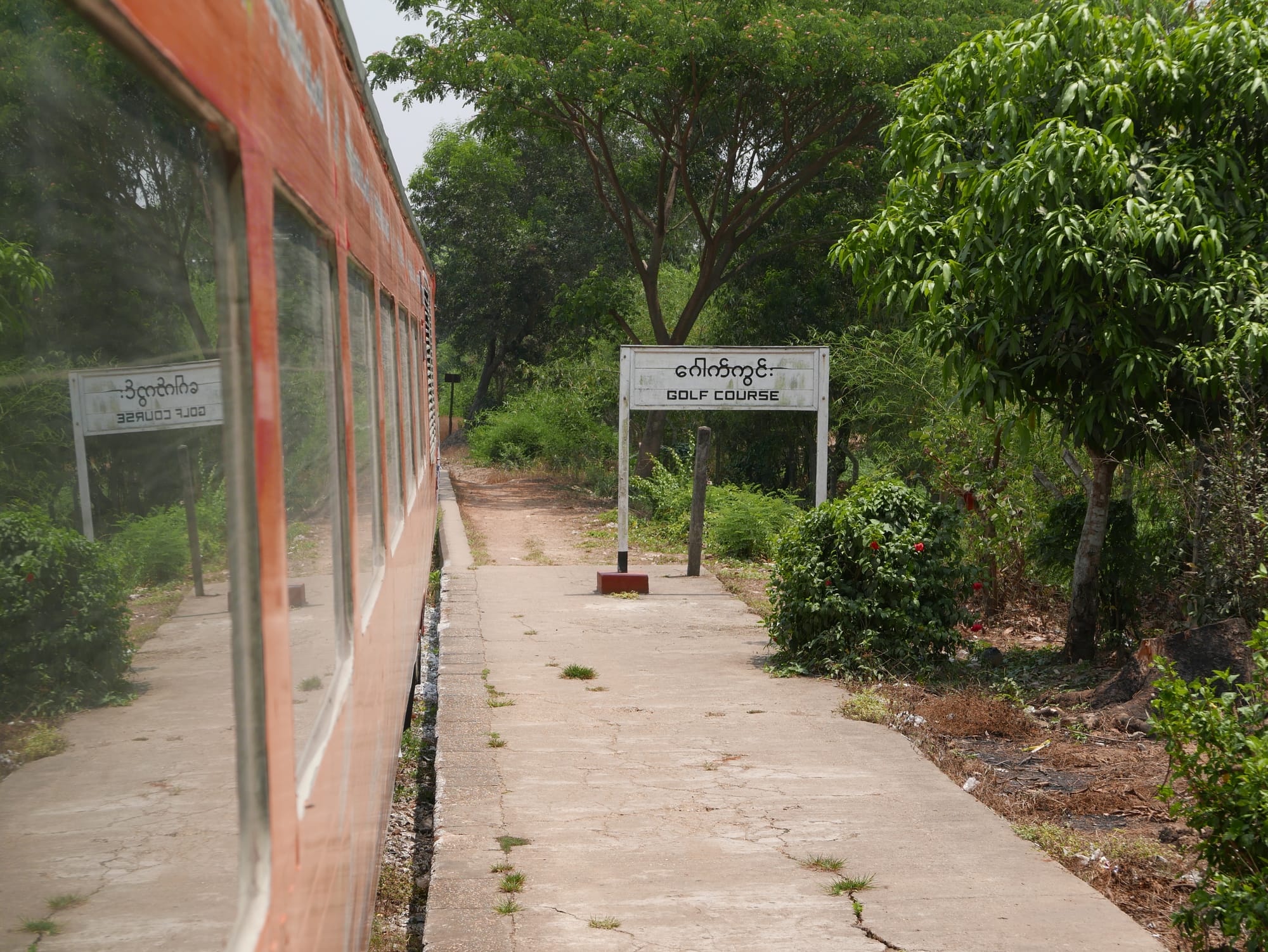
What made the journey on the Circular Train special were the people.
It was an excellent place for people watching and a fantastic way to experience the Yangon area.
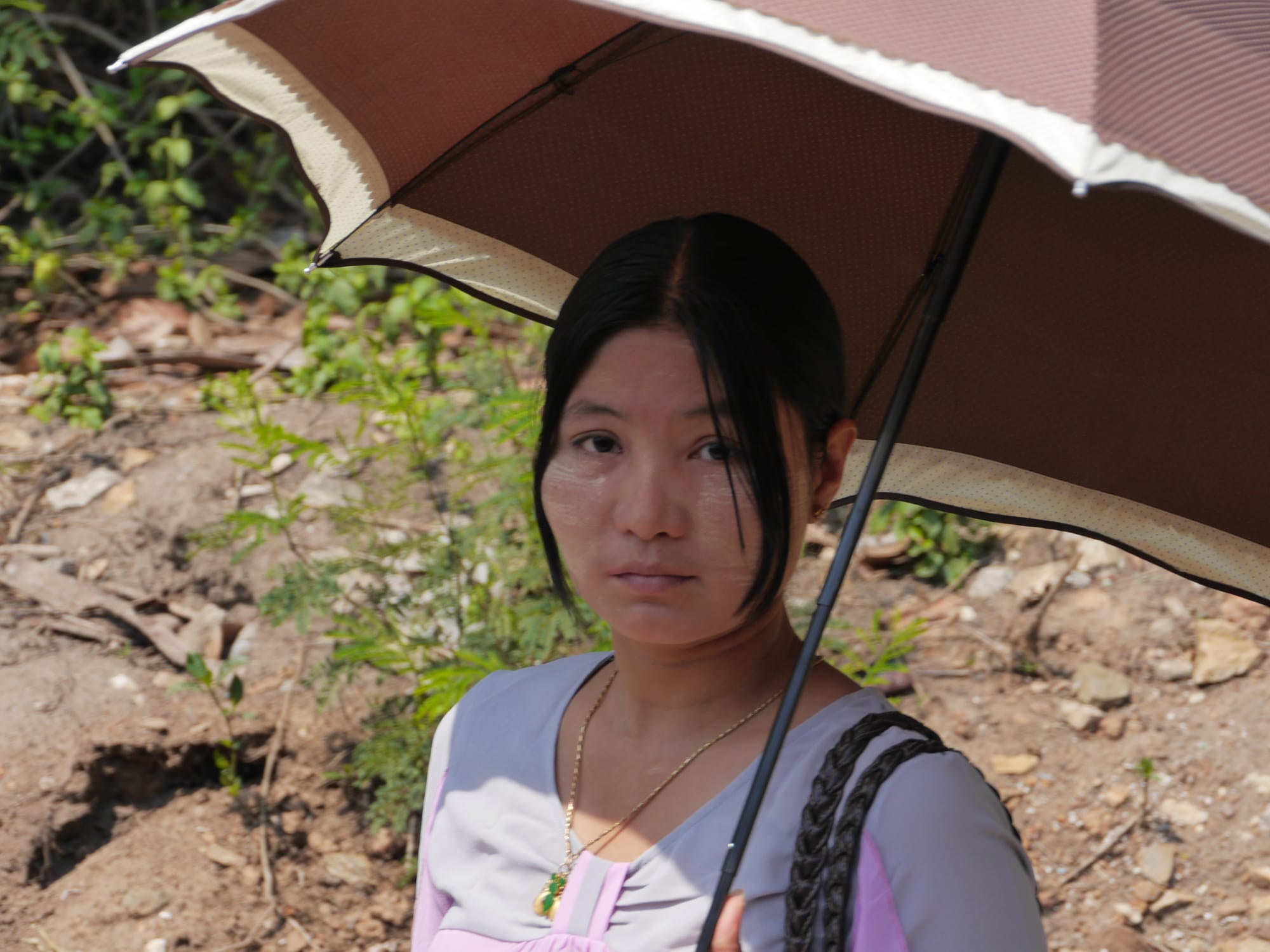
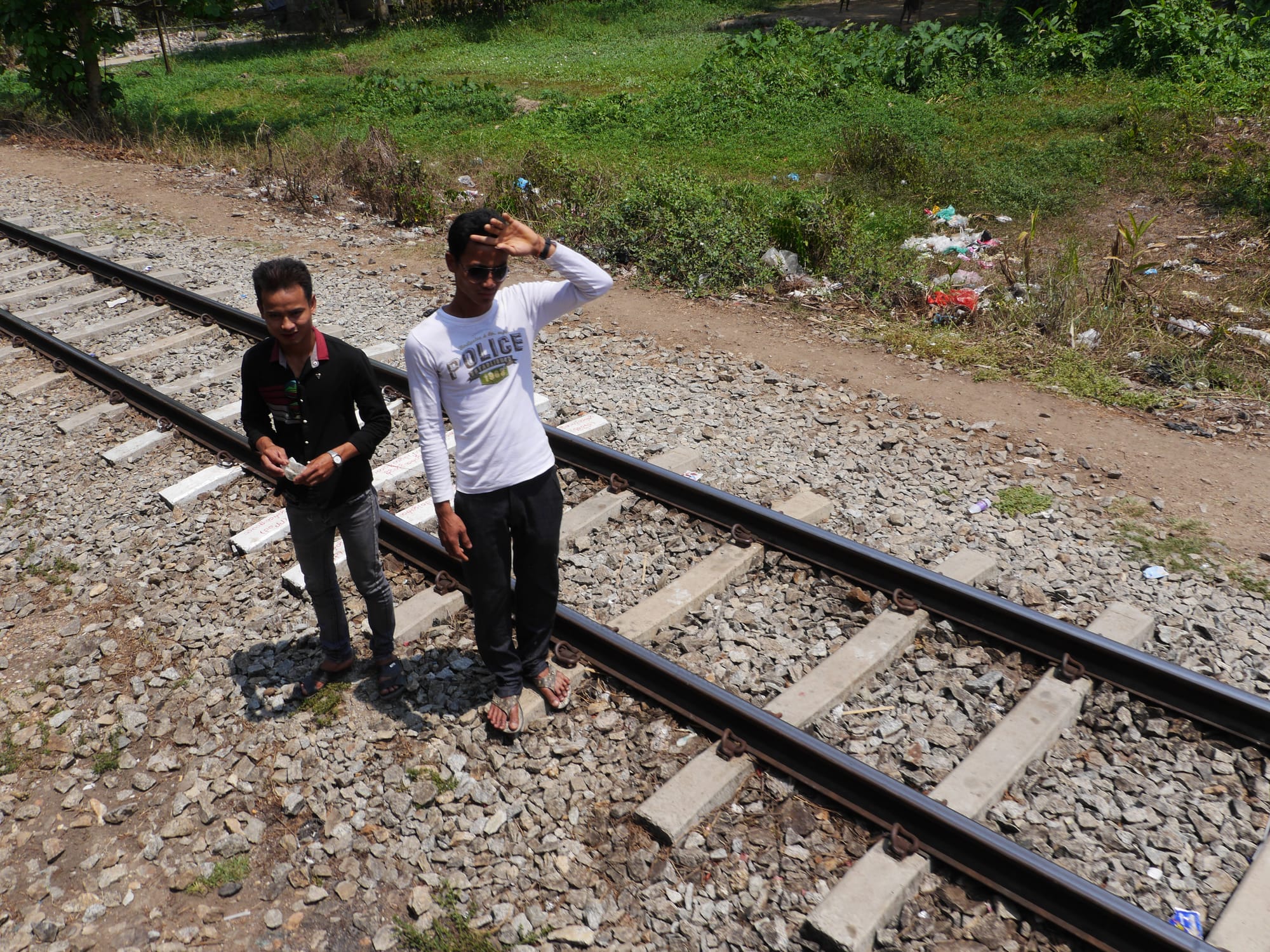
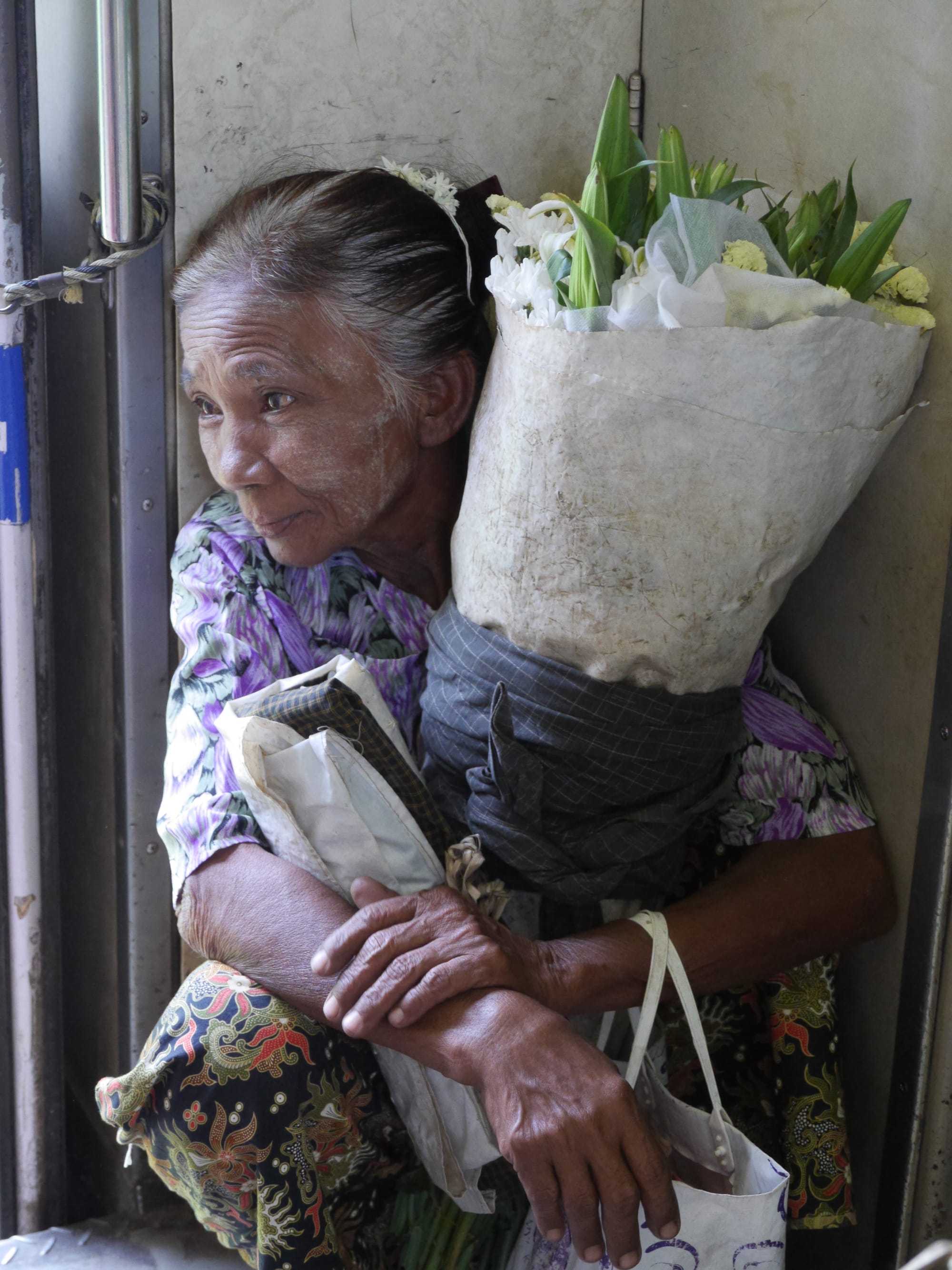

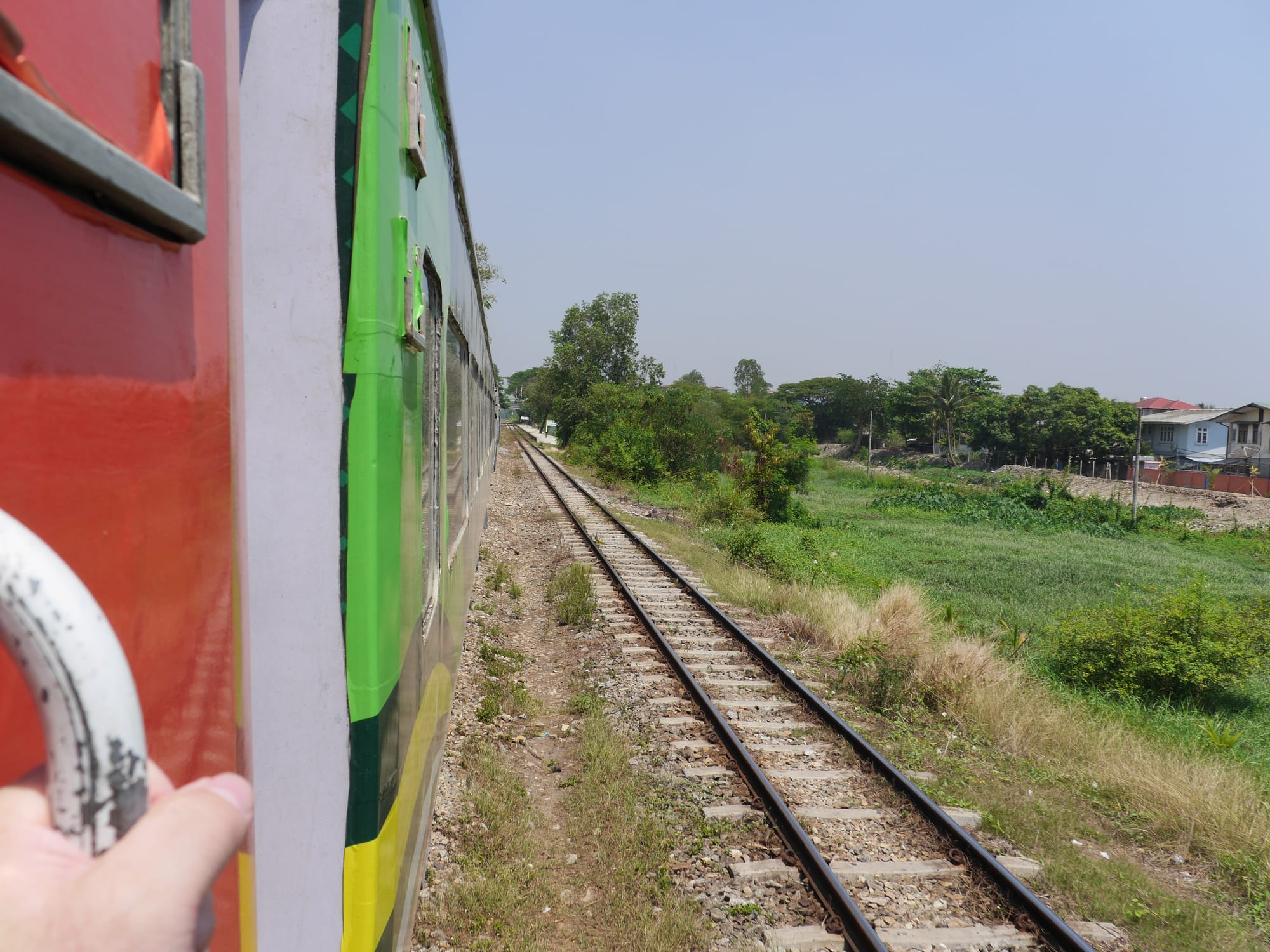
The Circular Train was a great way to see Yangon (Rangoon).
The train runs from the centre of Yangon (Rangoon) into the countryside before looping back toward the city centre. It took about 2 hours and 30 minutes to 3 hours to complete the circuit.
The train was a great way to see Yangon (Rangoon) and the people of Yangon (Rangoon) going about their daily lives. The biggest shock for me during the trip was the level of pollution I saw, and it was mainly plastic.
The trip was worth the time and the cost (1,000 kyats ($1.00; £0.65)), as you got to see the true Yangon (Rangoon). If you can’t handle the heat, get the air-conditioned train because even standing in the open door of a moving train, it is still very hot.
